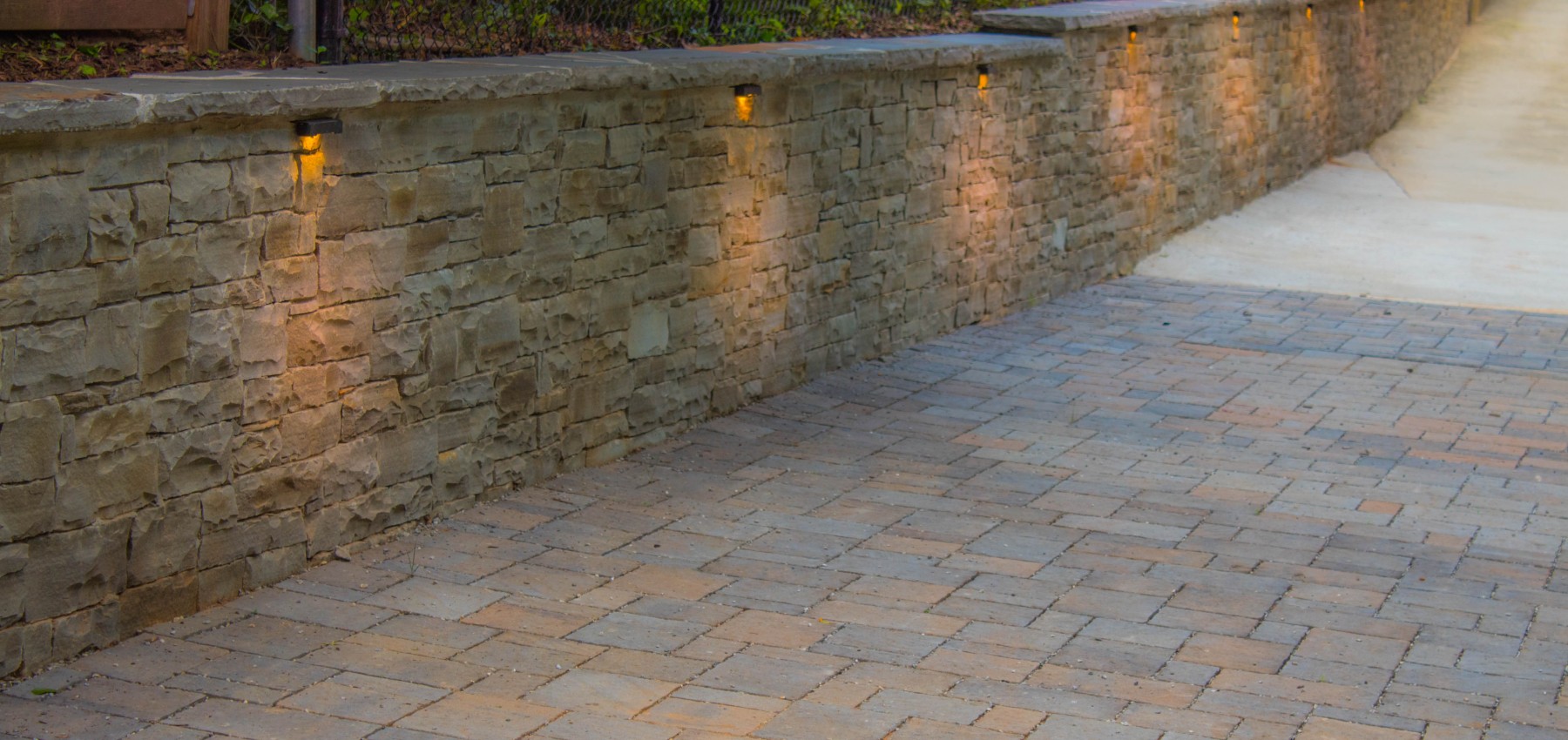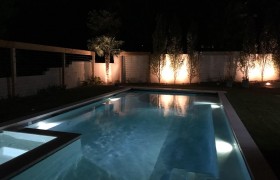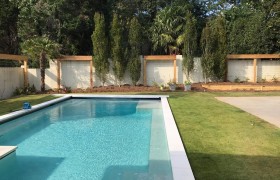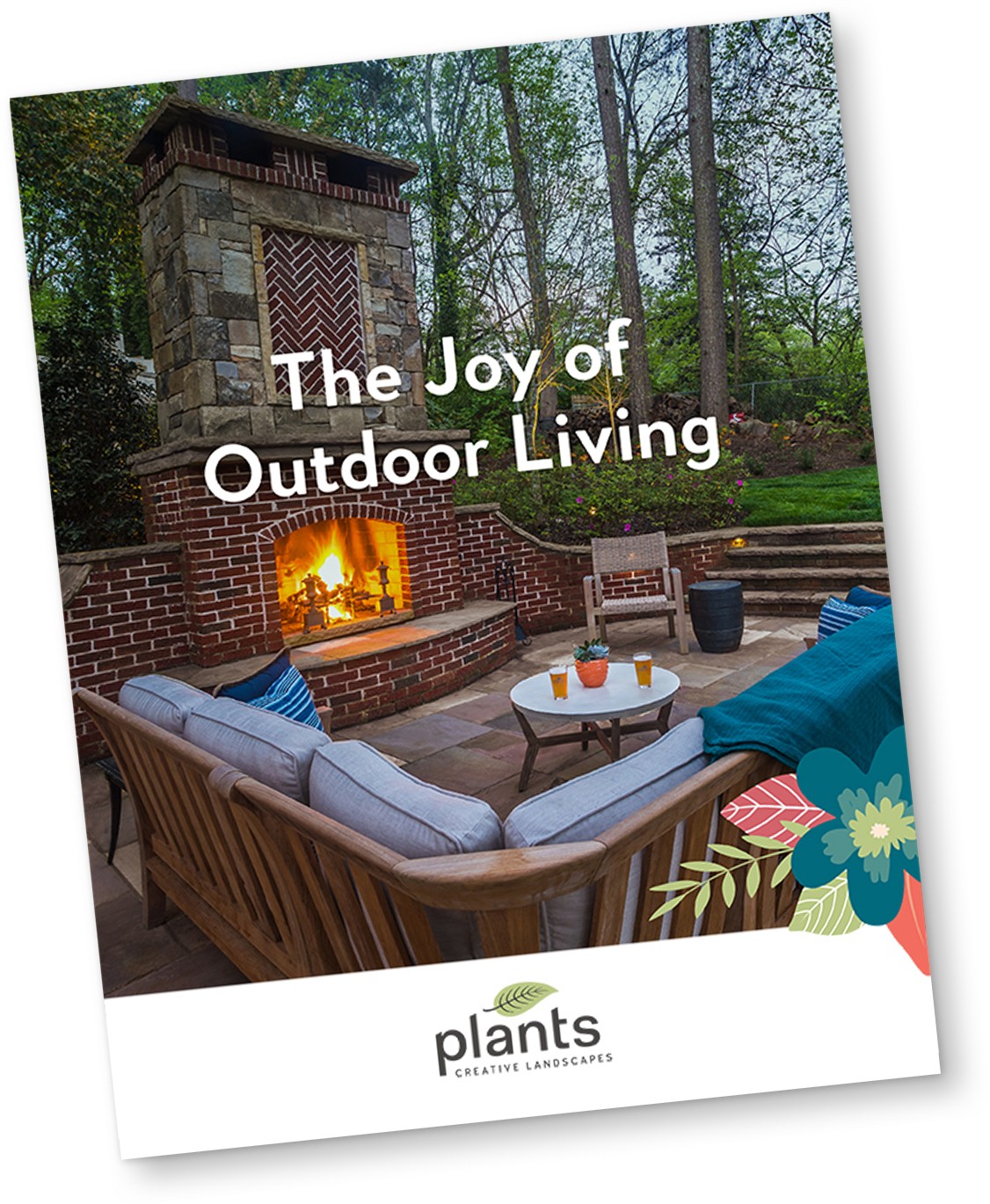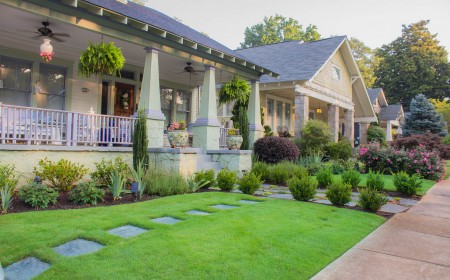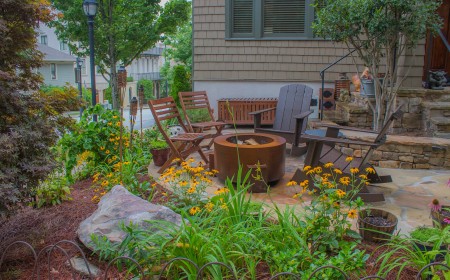Lighting up your landscape has many benefits. It gives you the freedom to entertain guests after dark. It makes your landscape more inviting and hospitable. It enhances your home’s curb appeal. And it adds extra safety by reducing tripping hazards and discouraging intruders from trespassing on your property.
Today, a beautiful, energy-efficient lighting system is more affordable than ever. But before I get into the techniques and types of landscape lighting out there, I always like to talk to our customers about low-voltage LED lighting systems. We recommend these to everyone.
Halogen vs LED bulbs
One of the most common questions I get from customers about lighting is: what bulbs do you use? At Plants Creative, we always recommend the latest in long-lasting LED lighting. Halogen light bulbs are still available and used, but we never recommend them.
Why is this? Quite simply, it has to do with energy use. Halogen lights, while much brighter and warmer, draw about 75% more power, which means they require more costly transformers. Plus, only 20% of the power used by halogens is converted to light. The other 80% creates heat! Because of this, halogen bulbs need to be changed about every six months since the filaments burn out so quickly.
Light-emitting diode (LED) lights, on the other hand, use far less power and last far longer. And the ratio is reversed here: 20% of power is converted to heat, while the other 80% is converted to light! Talk about efficient. Because of this, they can last anywhere from five years (usually at least 50,000 hours) to well… nearly forever! In the right conditions, these bulbs can last for an entire human lifetime. When compared to halogens, three to four times more LED lights can be used on smaller transformer without any voltage drop!
Halogen lights can also present a safety hazard. All that heat takes a while to disappear. I’ve heard stories of halogen garden lights lighting dry pine straw mulch on fire simply through their heat output! A halogen lamp that’s been on for a few hours can easily burn your hands or fingers.
In recent years, we’ve perfected the art of retrofitting halogen lighting systems with LED lights, so that our customers can enjoy the benefits of LED lights without getting an entirely new system.
Low voltage = lower electricity bills
A surefire way to save money with your lighting is by combining LED bulbs with a low-voltage system.
How does a low voltage system work? We install a transformer in your electrical system that converts normal 120 volt power to 12 volt power. This lower voltage means less electricity use! This transformer is plugged into an exterior GFCI outlet (the normal electrical outlets that are in most North American houses) instead of being hardwired in, so it can be easily unplugged if there’s ever an issue.
Now, these transformers can be purchased at many home improvement stores. Some people buy them there and attempt to install them themselves. But in Georgia, you need a low voltage permit to legally install them. This protects you from faulty installations and potential fire hazards.
The landscape lighting systems we install tend to be broken up into “zones” — not unlike irrigation systems. Each zone runs a different type of light with a different wattage. Doing this enables a user-friendly system that allows for differentiation — turn on the lights you want to use, and turn off the ones you don’t! We can also install a controller for the lighting that includes dimmers and timers, so you can easily control what parts of your landscape are lit up.
So there you have it: having a landscape lighting system professionally designed and installed — and that uses low-voltage, LED lights — can save you money in the long run. While LED lights have a higher front-end cost, typically after about two years of use they pay for themselves in energy savings. If this post has piqued your interest, feel free to reach out to us to find out more!
